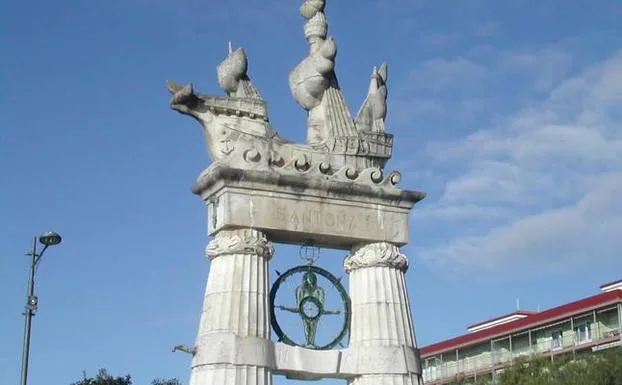SPAIN – Cantabria (Santander, Torrelavega) September 9, 2021
COMILLAS. A NM small town
Comiilas Cemetery. Luis Doménech y Montaner refurbished the cemetery that stands on the ruins of an ancient Gothic church. He designed a surrounding wall, which is decorated with picturesque elements such as the pinnacles, the four-armed crosses, and the main entrance arch. Doménech wanted to emphasize the ruin, so on a corner of the ancient wall, he added the marble sculpture of the Guardian Angel designed by José Llimona (1894-1985). The architect also designed the family crypt for Don Joaquín del Piélago where he added some modernist nuances such as a twisted wave on the surface of the tomb.
He achieved a mood of timelessness, expressed by the ambivalent and solemn calm of the angel that stands on a corner like a bird, in contrast with the faded ruins. These ruins tell us a story of an old lady who was attending the services on a Sunday afternoon. She was seated in the pew reserved for the Duke of the Infantado, the feudal lord, and was ordered to budge. There were many arguments and it was finally decided to remove that particular pew but it was too late for the congregation that had sworn never to return and had already moved to the Hermitage of Saint John, the ancient Town Hall.
As a result, the townspeople decided to build a new temple, away from the dead and protected from the strong winds, in the neighbourhood now called Barrio de la Iglesia. They put aside a day a week to work on the church, thus, they spent more than two centuries on its construction.
An ancient church has been taken over by a modern cemetery, full of modern graves most in crypts lining every wall. The most amazing is one to Amelia de Telas, a mammoth white marble grave headed by a winged woman. The church itself has wonderfully adorned with turrets and crosses and a marble statue to St Michele on top of the main sanctuary.
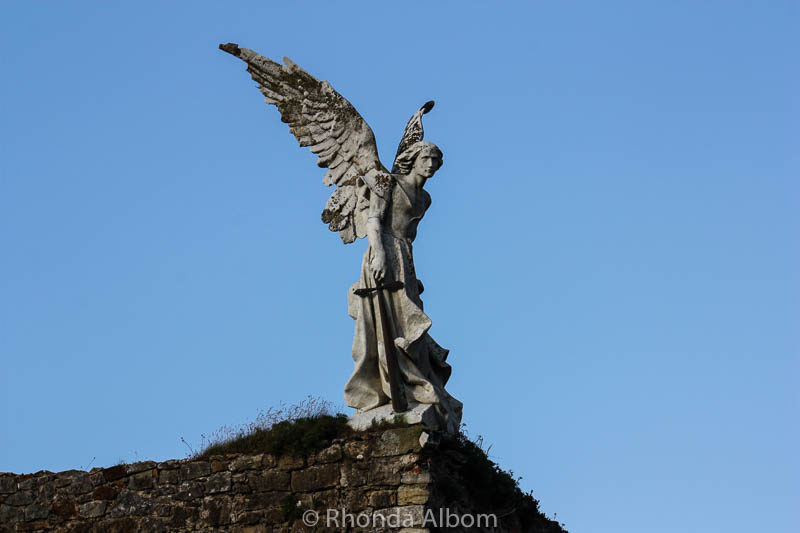
Comillas Beach. The main beach of Comillas is a small beach on the north side of the town.
Cave of Altamira and Paleolithic Cave Art of Northern Spain WHS
Cave of Altamira is a cave complex, located near the historic town of Santillana del Mar in Cantabria. It is renowned for prehistoric parietal cave art featuring charcoal drawings and polychrome paintings of contemporary local fauna and human hands. The earliest paintings were applied during the Upper Paleolithic, around 36,000 years ago. The site was discovered in 1868 by Modesto Cubillas.
Aside from the striking quality of its polychromatic art, Altamira’s fame stems from the fact that its paintings were the first European cave paintings for which a prehistoric origin was suggested in 1880.
However, the publication of Sanz de Sautuola’s research quickly led to a bitter public controversy among experts, some of whom rejected the prehistoric origin of the paintings on the grounds that prehistoric human beings lacked sufficient ability for abstract thought. The controversy continued until 1902, by which time reports of similar findings of prehistoric paintings in the Franco-Cantabrian region had accumulated and the evidence could no longer be rejected.
The cave can no longer be visited, for conservation reasons, but there are replicas of a section at the site and elsewhere.
The cave is approximately 1,000 m (3,300 ft) long and consists of a series of twisting passages and chambers. The main passage varies from two to six meters in height. The cave was formed through collapses following early karst phenomena in the calcareous rock of Mount Vispieres.
Archaeological excavations in the cave floor found rich deposits of artifacts from the Upper Solutrean (c. 18,500 years ago) and Lower Magdalenian (between c. 16,590 and 14,000 years ago). Both periods belong to the Paleolithic or Old Stone Age. In the two millennia between these two occupations, the cave was evidently inhabited only by wild animals.
Human occupants of the site were well-positioned to take advantage of the rich wildlife that grazed in the valleys of the surrounding mountains as well as the marine life available in nearby coastal areas. Around 13,000 years ago a rockfall sealed the cave’s entrance, preserving its contents until its eventual discovery, which occurred after a nearby tree fell and disturbed the fallen rocks.
Human occupation was limited to the cave mouth, although paintings were created throughout the length of the cave. The artists used charcoal and ochre or hematite to create the images, often diluting these pigments to produce variations in intensity and creating an impression of chiaroscuro. They also exploited the natural contours of the cave walls to give their subjects a three-dimensional effect. The Polychrome Ceiling is the most impressive feature of the cave, depicting a herd of extinct steppe bison (Bison priscus in different poses, two horses, a large doe, and possibly a wild boar.
Dated to the Magdalenian occupation, these paintings include abstract shapes in addition to animal subjects. Solutrean paintings include images of horses and goats, as well as handprints that were created when artists placed their hands on the cave wall and blew pigment over them to leave a negative image. Numerous other caves in northern Spain contain Paleolithic art, but none is as complex or well-populated as Altamira.
During the 1970s and 2000s, the paintings were being damaged by the carbon dioxide and water vapor in the breath of a large number of visitors. Altamira was completely closed to the public in 1977 and reopened to limited access in 1982. Very few visitors were allowed in per day, resulting in a three-year waiting list. After green mold began to appear on some paintings in 2002, the caves were closed to public access.
A replica cave and museum were built nearby and completed in 2001 reproducing the cave and its art. The replica allows a more comfortable view of the polychrome paintings of the main hall of the cave, as well as a selection of minor works. It also includes some sculptures of human faces that are not visitable in the real cave.
As well as the adjacent National Museum and Research Center of Altamira there are reproductions in the National Archaeological Museum of Spain (Madrid), in the Deutsches Museum in Munich (completed 1964) and in Japan (completed 1993).
A modern interpretation of a bison from the Altamira cave ceiling, one of the cave’s most famous paintings.

SANTILLANA del MAR. A NM village, this has been pedestrianized and is a lovely place to walk through.
Torture Museum. In the NM series, The Dark Side, this museum has a great display of methods of torture with vivid descriptions. The Spanish Inquisition was highlighted. The Spanish monarchs in the name of the church instituted the Spanish Inquisition in 1478 where 150,000 were tortured to extract confessions and about 5,000 were killed to stop heresy (over 90% were Jews), a crime against the state. Rulers, whose authority was believed to come from god, had no patience for heretics. Amazingly, it was not stopped until 1834. All Jews were finally expelled from Spain in 1492 and from Portugal in 1497.
Estuatua perro caminante. On the sidewalk, just to the left of the bridge entrance is a small limestone statue of a small dog sitting at the base of an old large heraldic crest. They are surrounded by a metal railing.
SANTANDER
Casa Museo Menéndez Pelayo, In the NM Architectural Delights series, this is a Neomontañés style building. The Menendez Pelayo library was designed by Leonardo Rucabado using Herrerian motifs, and the works began in 1915. the library collection, donated to the city of Santander by the writer, with some 41,500 volumes, many of them of great value. A highlight the famous Trojan Chronicle, from the late thirteenth-early fourteenth century, beautifully illuminated. The interior has light through a large window, in the center of which is the royal coat of arms. Two other stained glass windows illuminate the east and west facades. In front of the library is the seated statue of M. Menéndez Pelayo, in white marble. In front of the garden, is his house, French-style, built-in 1876, with belongings from the Menéndez Pelayo brothers (Marcelino and Enrique).
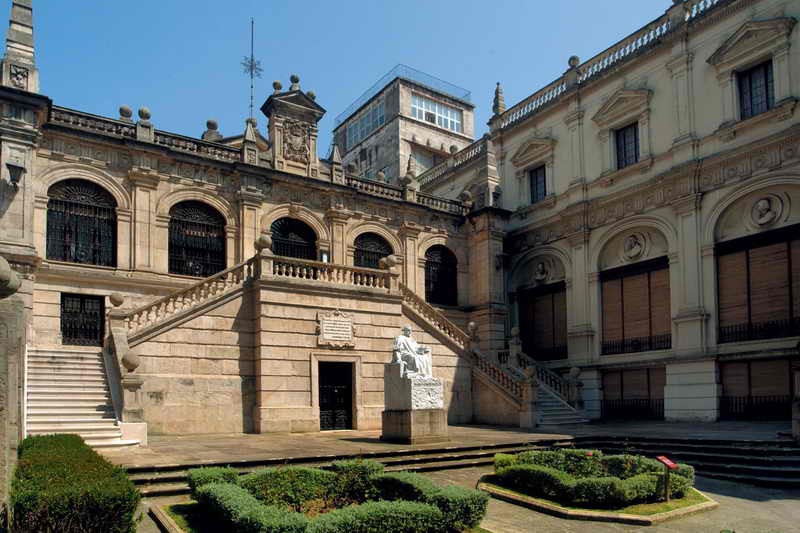
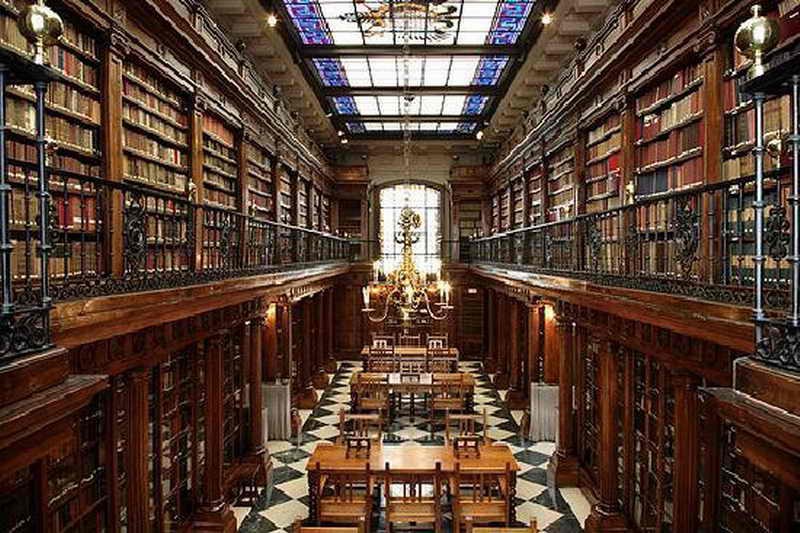 Centro Botin. In the NM Architectural Delights series, this is a Museum of Modern Art and a cultural center. The art museum is one of the world’s leading museums of modern art. The building was designed by the architect Renzo Piano. The Botín Foundation is the ideal and material sponsor of the institution. The construction work began in 2012, the opening took place on 23 June 2017 costing € 100 million.
Centro Botin. In the NM Architectural Delights series, this is a Museum of Modern Art and a cultural center. The art museum is one of the world’s leading museums of modern art. The building was designed by the architect Renzo Piano. The Botín Foundation is the ideal and material sponsor of the institution. The construction work began in 2012, the opening took place on 23 June 2017 costing € 100 million.
The Botín family is the founder of Banco Santander .The Botin Foundation is a family foundation founded in 1964>
The building is located at the Albareda Pier, adjacent to Pereda Park directly on the quay wall, which enhances the effect of the sophisticated architecture. With the exception of a glass central area, it rests on pillars, giving it an almost floating impression. It has two parts connected to each other by open walkways. The western part is an art museum. There is a restaurant and shops on the ground floor. The eastern part has a lecture hall and classrooms that are used for cultural purposes, lectures, and seminars.
The facade is covered with around 280,000 bright, semicircular ceramic tiles that reflect the daylight in a dazzling manner. Each part of the building has large glass surfaces on the waterfront and on the land side, which let in plenty of light inside and emphasize the lightness of the construction from the outside. 
Air raid Shelter (Refugio Antiaereo Satander). In the NM, The Dark Side series, this is under the Plaza de Mariana de Pineda (today Plaza del Príncipe). The people of Santander built a shelter in the spring of 1937 to protect themselves from aviation bombardments. Santander suffered 34 air attacks during the Civil War. In the visit, a bombing is recreated with explosions, the power goes out, the sirens sound, silhouette of the junker 52 planes that bombed Santande and a 250 kg bomb.
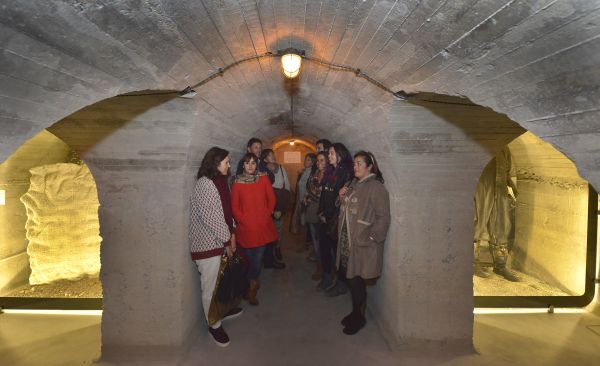
Los Raqueros. The word raquero designates marginalized children, orphans or of humble extraction, who frequented the docks of Santander during the 19th and early 20th centuries, surviving from small thefts and the coins that the passengers and crew of the ships threw into the sea to be taken out by diving. In time, these children became an attraction. They fished and spent the day on the dock, bathing generally naked or half-naked. They were also paid to rescue things that fell from the dock, such as hats, and espadrilles.
These treasure-seeking children disappeared years ago, but the Cantabrian sculptor and painter José Cobo Calderón wanted them to always be remembered. There since 2007, the bronze statues are of four children: two sitting, one jumping into the water and the other standing.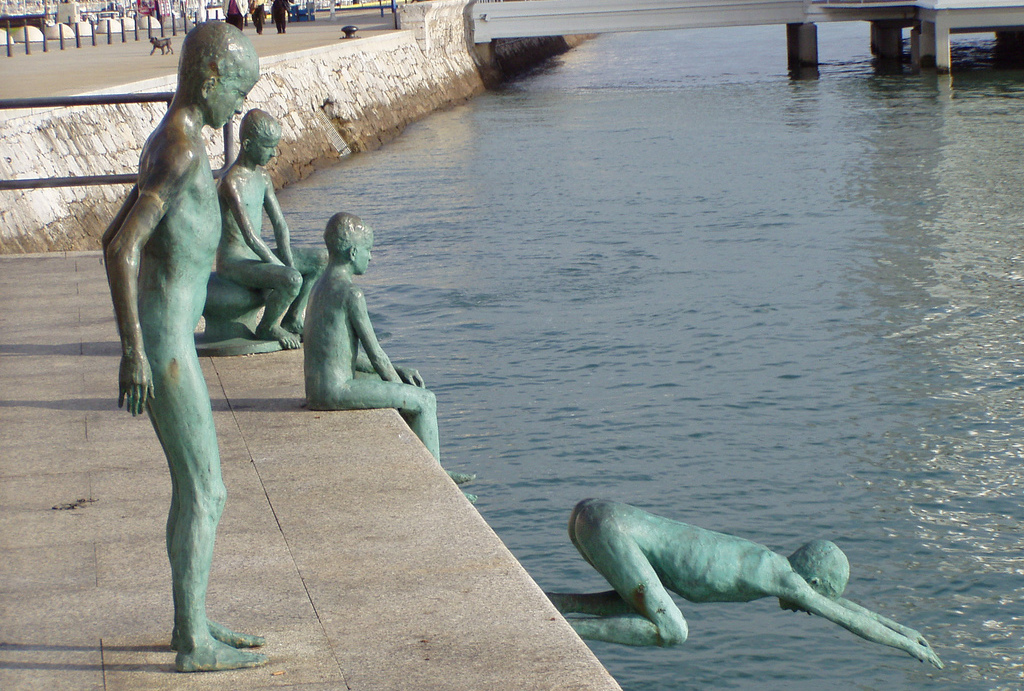
Gran Casino del Sardinero. There had been a casino very popular with royalty in this location, but it was demolished after a fire in the 1890s and the present building erected in 1916 in neoclassical style with modernist touches.. Since it opened the casino has games of roulette, blackjack, poker without discarding, and slot machines, and a Texas holdem tournament. There is dancing and staging of plays, musicals and operas. Ir has a game room, a room of slot machines, a restaurant, three dining rooms, two bars, a café and a party room, and a showroom with art by various artists.
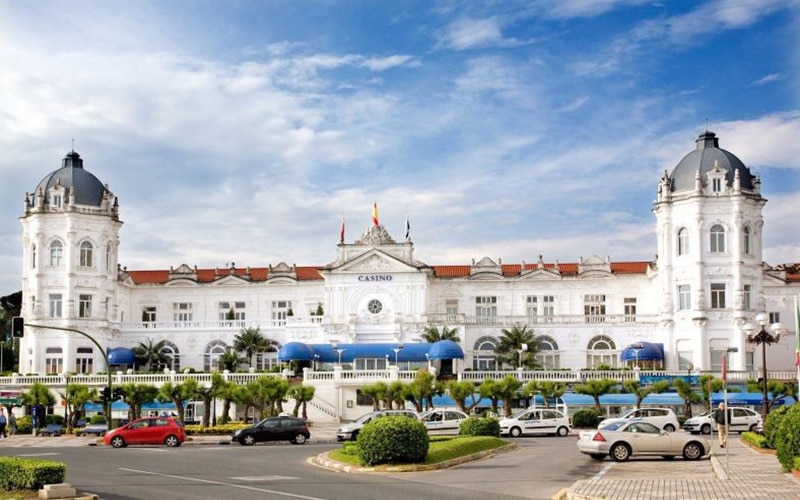
Playa del Sardinero. The big beach on the north side of Santander.
SANTONA
San Martin Fort. The geographical location of the city of Santoña was considered from ancient times a privileged position as a strategic position to prevent access to the bay. The city was invaded and razed over and over again by the French Navy.
Built in the shape of a vee, It has been rebuilt and restored as a Cultural Center and as the headquarters of the Heritage Rehabilitation School-Workshop.
Monumento a Juan de la Cosa. Two imposing white columns adorned with the coat of arms of the Catholic Monarchs, firmly support this beautiful sculpture in homage to Juan de la Cosa from Santoña. The Cantabrian cartographer who accompanied Columbus to the new world, piloting the Santa María. The ship is represented in the highest part of the monument, located in the heart of the Paseo Marítimo, in what is a nod to this universal sailor.